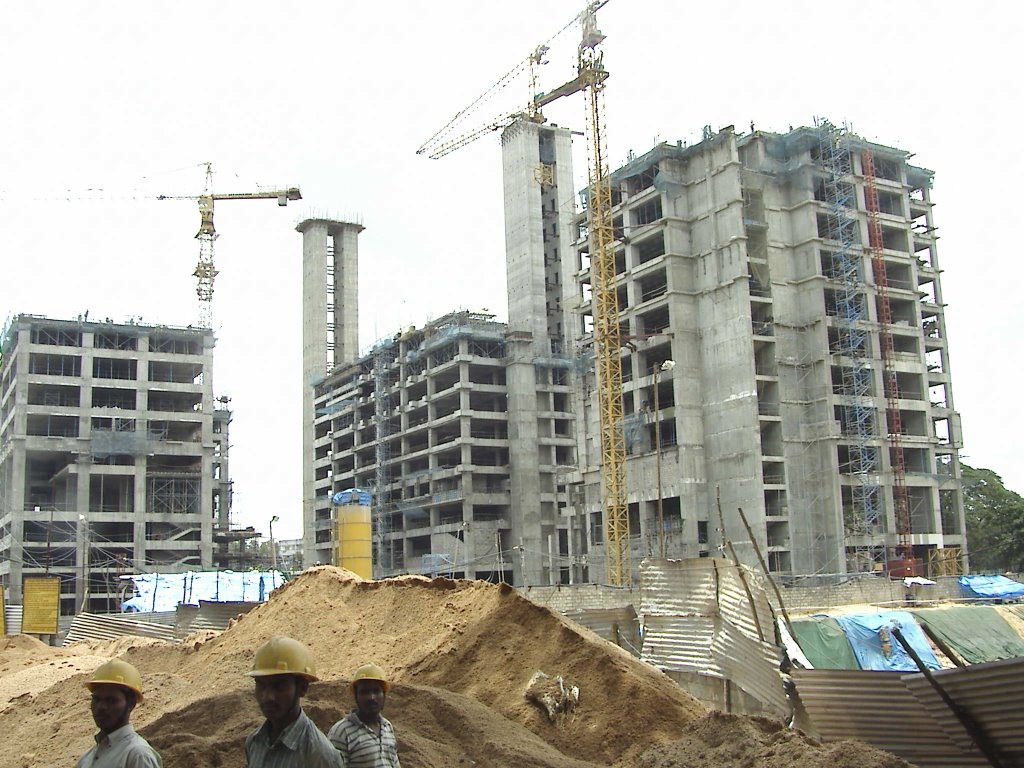
The real estate consultant Knight Frank has released a research report on the real estate market in Delhi and the National Capital Region (NCR). The most important point in the report is that home sales in Delhi and NCR have crashed by 50% to 14,250 units, during the period January and June 2015, in comparison to the same period last year.
The launch of new homes has also crashed dramatically by 68% to 11,360 units, during the period January and June 20115, in comparison to the same period last year. The total number of unsold homes in Delhi and NCR currently stands at around 1.89 lakh units as per Knight Frank.
Hence, the quarters to sell unsold inventory has jumped dramatically. As of June 30, 2015, the quarters to sell unsold inventory number was at 19 quarters. What does this mean? Knight Frank defines quarters to sell unsold inventory as: “The quarters to sell unsold inventory (QTS) is the number of quarters required to exhaust the existing unsold inventory in the market. The existing unsold inventory is divided by the average sales velocity of the preceding eight quarters in order to arrive at the QTS number for that particular quarter.”
Hence, quarters to sell unsold inventory is derived by dividing the total number of unsold homes currently, by the average rate at which homes have been selling over the past eight quarters.
Given that the average sales over eight quarters or two years is considered, the current average sales rate is lower than the overall average sales rate. Hence, if the quarters to sell unsold inventory were to be calculated using the latest average sales rate, the number would be even higher than 19 quarters.
Let’s do some basic maths and try and understand this. The total unsold inventory of homes in Delhi and National Capital Region stands at 1,89,678 units. The quarters to sell unsold inventory is 19 quarters. This means that the average sales rate for the last eight quarters thus stands at 9,988 units (1,89,768 divided by 19).
What is the latest sales rate? For the first six months of 2015 the total number of homes sold in Delhi were 14,250 units. This means a sales rate of 7,125 units (14,250 divided by 2) on an average, over the last two quarters.
If this number were to be considered as the average sales rate, then the quarters to sell unsold inventory would jump to 26.6 quarters (1,89,678 divided by 7,125) . What does this mean? If the total number of unsold homes continue to sell at the rate that they are currently selling at, it would take more than six and half years (26.6 quarters divided by 4), to sell them totally. And this, if no new homes were to be built in the days to come.
As can be seen from the accompanying graph, the quarters to sell unsold inventory has jumped big time over the last one year.
| Quarters To Sell (QTS) Unsold Inventory Analysis |
-UNSOLD-INVENTORY-ANALYSIS-equitymaster.gif?w=715&ssl=1) |
As Knight Frank points out: “NCR has moved from a quarters to sell unsold inventory of 14 to 19 in a six-month period. Though January to June 2015 was the leanest half in terms of new launches, the absence of sales velocity has pushed the quarters to sell unsold inventory to nearly 5 years.”
In fact, as the earlier calculation shows the actual quarters to unsold inventory might be more than six and a half years. This is the kind of mess that the real estate sector in the Delhi and National Capital Region is in. Some of the unsold inventory is more than three years old, as can be seen from the following graph.
| Micro-Market-Wise QTS vs Age Of Inventory |
 |
Data Source: Knight Frank Research.
In fact, to realise how quickly the situation is deteriorating we need to look at how things stood at as on June 30, 2014, a year earlier. The total unsold inventory one year back stood at 1,67,000, data from Knight Frank tells us. The quarters to sell unsold inventory stood at 9. One year later it is at 19.
Also, the average sales rate was at 18,556 units (1,67,000 divided by 9). Currently it is at 9,987 units, which is a fall of more than 46%, during the course of one year. As Knight Frank points out: “The opening up of new land parcels for development while the existing ones were still not fully utilised is seen as one of the reasons behind the inventory pileup in NCR.”
What makes the situation worse is that new supply (despite falling) will keep hitting the market. As of December 2014, 1,92,568 units were under various stages of construction in Delhi and National Capital Region. The latest report of Knight Frank does not provide an updated number. But given that only 11,360 new homes hit the market, the under-construction number as on June 30, 2015, cannot be significantly different from the December 2014 number.
To conclude, the real estate market in Delhi and the National Capital Region is dead. It will take many years for this market to recover. Your money will be better invested somewhere else.
Postscript: Hopefully, next week I won’t write on real estate.
The column originally appeared on The Daily Reckoning on July 31, 2015

